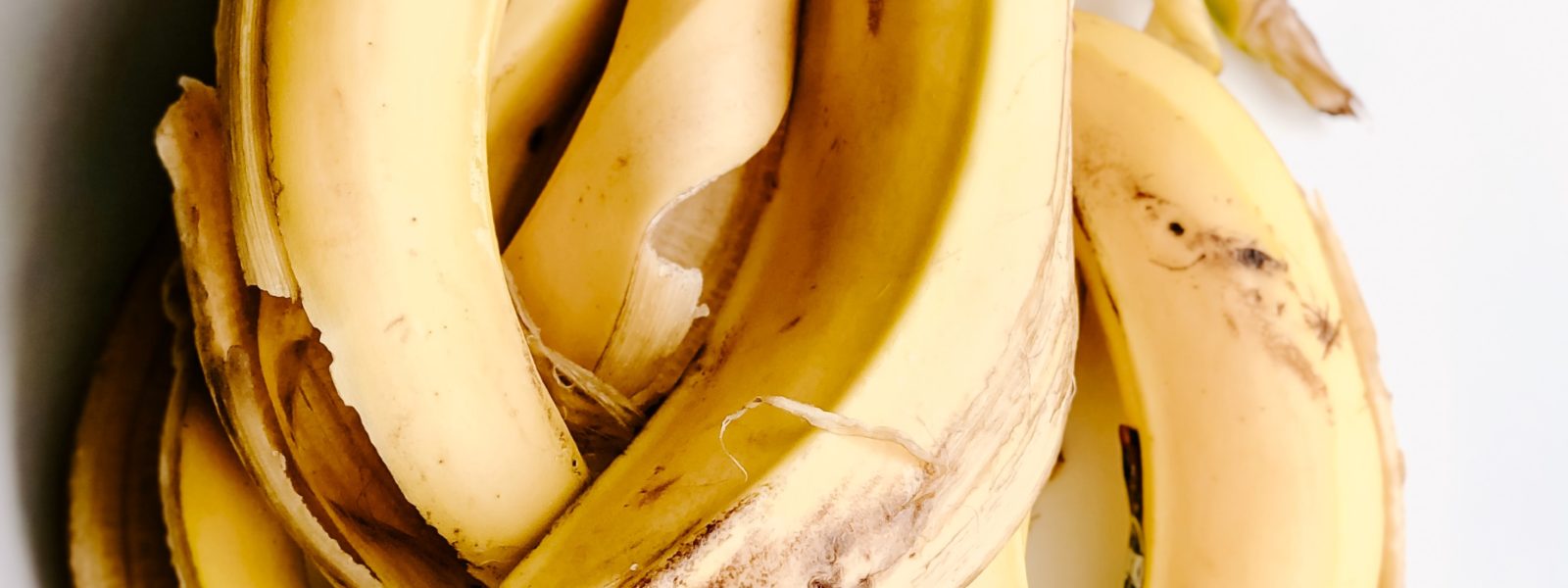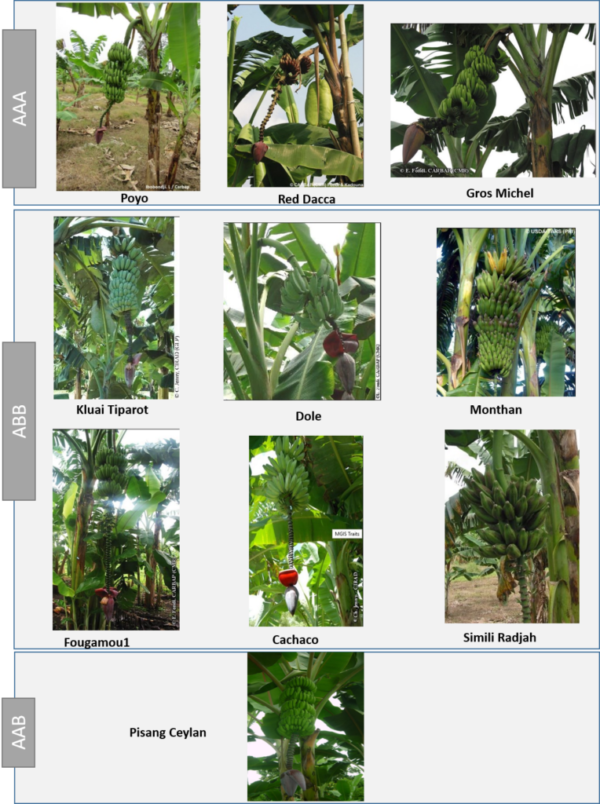The very thing that makes bananas so easy to eat – they don’t have seeds – also makes them hard to breed. Beneath that simple observation, however, lies a very complicated evolutionary history, one that three recent papers by researchers with the CGIAR Research Program on Roots, Tubers and Bananas help to uncover and, as they do so, hold out promise for easier banana breeding.
Cultivated bananas are generally triploid; that is, they contain three sets of chromosomes, as opposed to the customary two sets of their diploid wild relatives. The chromosome sets are labeled A or B and come from two wild relatives, Musa acuminata and M. balbisiana.
For example, the Cavendish variety of global international trade has three sets of A genomes. Others, like Fougamou 1, a cooking banana, are ABB (1 set of A chromosomes and 2 sets of B chromosomes), while Pisang Ceylan, a small, ladyfinger type of eating banana, is AAB.
Sebastien Carpentier, of the Banana Genetic Resources group at Bioversity International, and his colleagues looked at a selection of 32 different bananas (29 varieties and three wild relatives) in search of those that might perform better under drier conditions. Measured under identical, drought-simulating growing conditions, the best genotypes grew six to seven times more than the worst. The team identified two interesting traits that contribute towards drought tolerance, First, they consume less water during growth; and secondly, when water is scarce they invest more in producing roots than leaves. This last hints that the plants can reach deeper into the soil where they may find more moisture.
Drought is a very complex stress that needs to be tackled at many levels. Improving drought tolerance by breeding needs to focus on traits such as root production or reduced water loss from the leaves. More efficient breeding means that breeders need to identify parents that have those traits and screen their offspring early on. In that regard, the team noticed that most of the drought-tolerant varieties contained one or two B genomes.
“Phenotyping to identify those traits is the very first step and currently a bottleneck,” says Carpentier. “The next step is to identify the genes controlling the traits and prove that they are heritable.”
Mixed up chromosomes
In another RTB-supported effort, Angelique D’Hont of CIRAD in France and her colleagues mapped in detail how the A and B genomes are organized in a few banana varieties. Their key insight was that the A and B genomes are mixed in complex ways along some of the individual chromosomes. This mixing, called recombination, is reflected by the presence of A genome segments on B chromosomes and vice versa, and it offers new clues about the origin of edible bananas and the subsequent selection of different varieties by early banana farmers.
While it is very early days, these results offer breeders exciting prospects. One is that molecular maps may give them better ways to select new varieties that combine traits from the A and B genomes, such as the drought tolerance apparently associated with the B genome. A software package released by the group will allow other researchers to perform similar analyses on new material.
ABB bananas have regions of their genomes with higher B gene activity
In the third paper, Mathieu Rouard of the Banana Genetic Resources group of Bioversity International, and his colleagues extended the results of D’Hont’s group to look for links between the recombination of A and B chromosomes and the activity of their genes in root cells.
They selected a panel of varieties from the 29 reference varieties of the original drought-tolerance study. Once again, genome recombinations were detected and in addition the activity of the B genes differed from what would be predicted from their overall ABB or AAB makeup. Furthermore, when the researchers looked in detail at cellular metabolism in the roots, they found that the ones with a larger proportion of B genes were more active in pathways that help the root to supply itself with energy from the nutrients coming down from the leaves.
In addition to practical possibilities, because root growth is a target for banana breeders, the results also shed light on the history of domesticated bananas. Because most cultivated bananas do not produce seeds, almost all diversity among bananas comes about through mutations that farmers select because they offer some benefit. However, the study suggests that recombinations that occurred during the setup of triploids could have a link with some traits of interest, although Rouard remains cautious. “The linkage between these genomic events and the link to the resilience of the plant would have still to be demonstrated.”
Nevertheless, a detailed knowledge of the genome architecture could help scientists understand how different varieties are related, and that too could ultimately help to make banana breeding easier.

